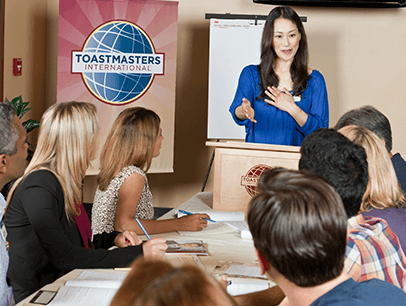
Mastering the art of introducing oneself in professional settings is akin to unlocking a door to myriad opportunities. Effective introductions go beyond merely stating your name and occupation; they encapsulate your essence, aspirations, and the unique value you bring to the table.
For almost three decades, I have been helping people hone their communication skills as a teacher, coach, and now a podcast host. Over the years, I have discovered and developed tips to help people make memorable introductions that resonate across cultural and professional landscapes. I call this the “What, So What, Now What” framework.
Crafting an Effective Introduction
First impressions are critical in setting the stage for future interactions, often dictating the trajectory of professional and personal relationships. We know from psychology that primacy effects—what we hear first from someone—impacts, anchors, and frames everything that follows. A memorable introduction is not just an exchange of names but an invitation to explore professional identities and shared values.
For example, consider Anika, a software developer, who introduces herself at tech meet-ups by highlighting her recent project, “Hi, I’m Anika, and I developed an app that simplifies project management for nonprofits.” This introduction not only shares her profession but also allows her to express her passion, inviting interest and conversation. It is a strong introduction because it provides details and uses memorable language.
Effective introductions encapsulate your essence, aspirations, and the unique value you bring to the table.
An impactful introduction includes several key components: your name, your professional role, and an engaging piece of information that sets you apart. Think about things you are passionate about, accolades you’ve received, or aspirations you have. Take, for instance, Raj, a graphic designer with a focus on sustainable solutions. He might introduce himself as, “I’m Raj, a designer who’s passionate about creating environmentally friendly branding materials.” This approach not only conveys his profession and specialty but also his personal commitment to sustainability, making his introduction memorable, differentiating him from others, and inviting further discussion.
The “What, So What, Now What” Framework
This framework is a simple yet effective structure for crafting powerful introductions:
- What: State who you are and the roles you fill. For example, “Hi, my name is Shozuki, and I’m deeply committed to social justice.”
- So What: Express what excites or interests you. For instance, “I believe we are all better off when we hear from diverse, engaged voices.”
- Now What: Extend an invitation for the other person to engage further in the conversation. If you’re at an event, an example could be, “I’m curious to know what brings you here.”
This framework not only structures your introduction in a memorable and engaging manner but also paves the way for a deeper connection by inviting immediate dialogue. The clarity and concision this structure affords the recipients with clear hooks for follow-up questions. A necessary part of effective conversation is setting up your partner to easily respond and the framework does just this.
In this video, Matt Abrahams provides tips to help you stand out and convey confidence when you introduce yourself to others.
Navigating International Networking
Introductions are not only needed for networking events, but also when you need to introduce yourself to a larger group of people, for instance at a speaking event.
In 2023, I was invited to present an education session on spontaneous speaking at the Toastmasters International Convention. I knew the audience would be from all over the world, and I also knew that having a compelling introduction for yourself is particularly crucial in diverse and dynamic environments, such as the convention.
In these types of global settings, the importance of crafting culturally sensitive introductions cannot be overstated. Adapting your introduction to align with cultural norms can significantly enhance its reception.
At that event, the diversity of the audience presented me with a unique opportunity to practice authentic, contextually relevant introductions. Leveraging the “What, So What, Now What” framework, I tailored my presentation’s introduction to highlight my passion for communication and leadership, core themes of Toastmasters.
- What: I began with, “Hi, I’m Matt, and I’m super passionate about communication.”
- So What: I continued, “I love helping people express themselves more effectively.”
- Now What: I concluded with, “I’m excited to know what motivates you.”
This structured approach not only facilitated deeper connections but also underscored the relevance of my introduction to the event’s focus, enhancing engagement among attendees. By inviting others to share their motivations, I was teeing up an easy way for them to connect with me and others.
Effective self-introduction in professional networking is about more than sharing basic information; it’s an opportunity to make a meaningful connection, share your unique story, and pave the way for future opportunities. By using a structured approach like “What, So What, Now What,” every introduction can be a moment of impact, leading to enduring professional relationships and collaborative ventures.
Matt Abrahams is a lecturer at Stanford Graduate School of Business, the author of Think Faster, Talk Smarter: How to Speak Successfully When You're Put on the Spot and Speaking Up Without Freaking Out. He also hosts Think Fast, Talk Smart: The Podcast.
Related Articles

Communication
Step Up Your Speaker Introductions

Presentation Skills



 Previous
Previous

 Nervous About Networking?
Nervous About Networking?
 Previous Article
Previous Article